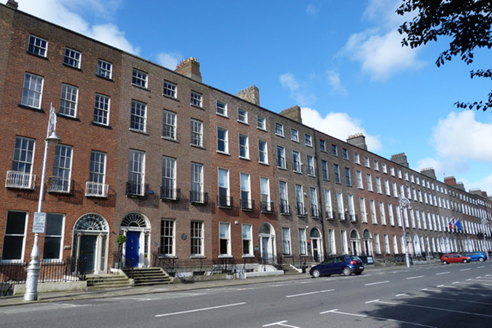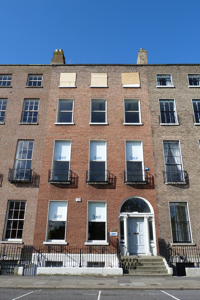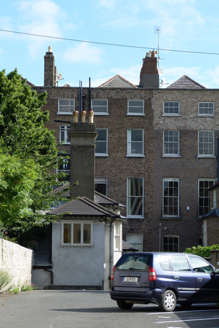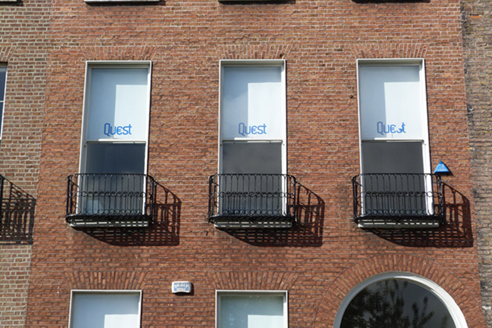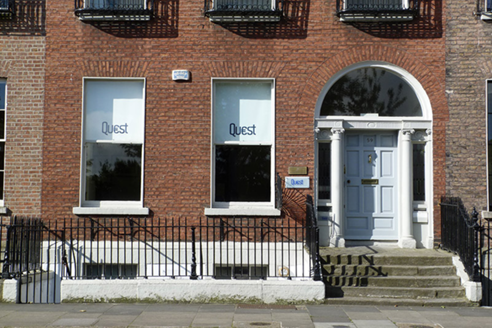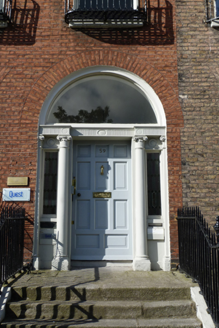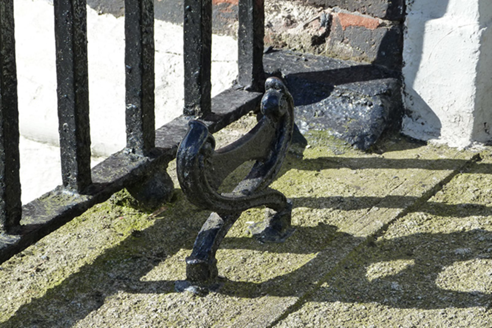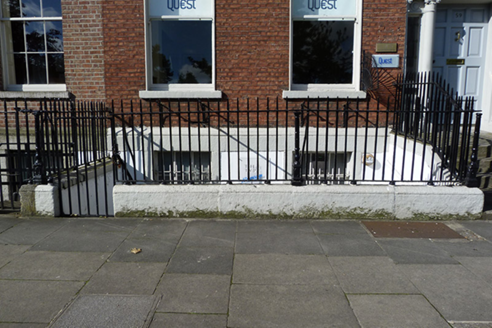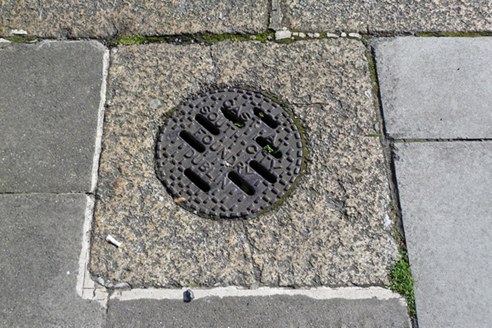Survey Data
Reg No
50100429
Rating
Regional
Categories of Special Interest
Architectural, Artistic
Original Use
House
In Use As
Office
Date
1785 - 1795
Coordinates
316703, 233421
Date Recorded
03/07/2016
Date Updated
--/--/--
Description
Attached three-bay four-storey former house over basement, built c. 1790 apparently as one in terrace of seventeen, having single-storey return to rear. Now in use as offices. Pitched slate roof to front, behind brick parapets with granite copings, and two hipped roofs at rear perpendicular to street, larger over eastern bays. Brick chimneystacks to party walls with clay pots. Replacement rainwater goods to rear elevation. Flemish bond brown brick walls on painted granite plinth course, with painted rendered walls to basement. Square-headed window openings, diminishing in height to upper floors, with rendered reveals and painted granite sills; carved granite block-and-start surrounds to basement windows. Timber sliding sash windows, six-over-six pane to basement and replacement one-over-one pane above (top floor front elevation windows boarded up at time of survey). Decorative wrought-iron balconettes to first floor, and wrought-iron grilles to basement. Round-headed principal doorway with rendered linings, fluted frieze and cornice, engaged Ionic columns with respond pilasters flanking stained-glass sidelights, plain fanlight and ten-panel timber door with brass furniture. Granite platform with cast-iron boot-scrape and five granite steps. Wrought-iron railings enclosing basement area with decorative cast-iron posts on carved granite plinth. Cast-iron coal-hole covers set in granite flags to footpath. Rear of plot has small garden, otherwise carparking, boundary to lane is concrete block wall with sheet metal vehicular gate.
Appraisal
No. 59 Merrion Square forms part of the eighteenth-century square developed by the Fitzwilliam Estate. It has an Ionic doorcase with stained-glass sidelights that provides a decorative focus to an otherwise restrained façade. The railings also provide visual and craft interest, and the decorative balconettes add further interest. This building and its setting details contribute significantly to the intact appearance of this important architectural set-piece. The square is one of the best-preserved Georgian streetscapes in Ireland. The north, east and south sides are lined with terraced houses of eighteenth and early nineteenth-century date, while the west side is terminated by the garden front of Leinster House. The houses maintain a relatively uniform building height and design, attributed to standards promoted in Fitzwilliam's leases. Individuality was introduced through the design of doorcases, window ironwork and interior decorative schemes. The south side of Merrion Square was initially set in large plots of twelve leases; plots were leased consecutively from east to west up until the row was completed in 1791.
